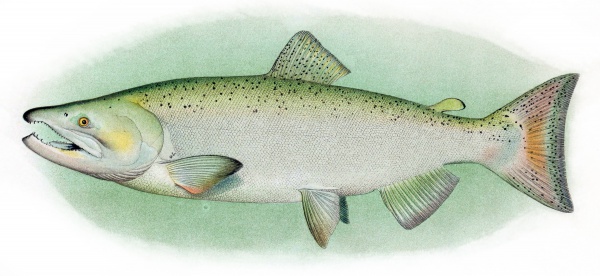Facts About Chinook salmon
The Chinook salmon, often referred to as king salmon, is the largest species in the Pacific salmon family, classified under the genus Oncorhynchus. These remarkable fish are indigenous to the North Pacific Ocean and the rivers of western North America, with a range extending from California to Alaska. They have also been introduced to other regions, including New Zealand, the Great Lakes, and Patagonia. Highly valued for their rich nutritional profile, particularly their high omega-3 fatty acid content, Chinook salmon are popular among seafood enthusiasts. While some populations are endangered, many remain robust and healthy.
Chinook salmon have an extensive range, from northern Japan to northern Siberia in the western Pacific, and from California to Alaska in North America. They have been successfully introduced to the Great Lakes, New Zealand, and Patagonia. These fish can grow to impressive sizes, with some individuals exceeding 100 pounds. They are distinguished by their striking coloration, featuring blue-green, red, or purple backs and shimmering silvery sides.
The life cycle of a Chinook salmon is captivating. They spend between one to eight years in the ocean before migrating back to their natal rivers to spawn. During this time, they undergo significant changes in appearance. Unlike other salmon species, Chinook prefer to spawn in deeper and larger bodies of water. Their spawning season runs from September to December, and it takes about 90 to 150 days for the eggs to hatch. The juvenile salmon then spend some time in freshwater before heading out to the ocean.
Chinook salmon face several threats, including overfishing, habitat destruction, poor ocean conditions, and issues related to hatchery practices. Due to these challenges, several populations are protected under the U.S. Endangered Species Act. Conservation efforts are essential to safeguard these fish and their habitats. The fishing industry also plays a significant role, with considerable harvests coming from both wild fisheries and aquaculture operations in countries such as New Zealand and Chile.
For many indigenous peoples, Chinook salmon hold deep spiritual and economic significance. First-salmon ceremonies highlight their cultural importance. Historically, the Lewis and Clark Expedition documented the Chinook salmon as a highly valued food source. Today, the Chinook salmon is honored as the state fish of both Alaska and Oregon.

 United States
United States